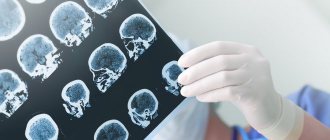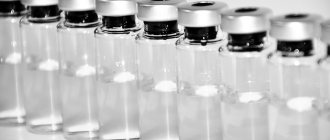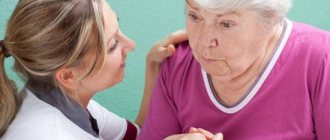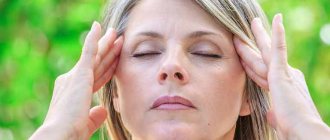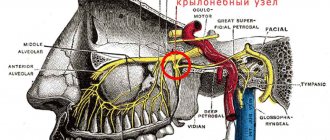Cerebrovascular accident
Vessels transport blood to organs and tissues of the whole body, enriching them with oxygen and various useful components.
The activity of the system depends on the state of the elastic tubular formations. They should not be injured, since injury provokes the appearance of blood clots. Any obstacles will interrupt the blood supply process. Attention!
Thrombi are clots that form in the bed of deformed arteries and vessels. Their appearance is the body’s reaction to microtraumas; they are required to stop internal bleeding.
In the human body, all vessels communicate with each other, liquid connective tissue must move through them without obstacles. This system is important; it transfers blood at the request of the brain and creates conditions for its outflow. The slightest violations can have a detrimental effect on health. An analogy can be drawn with a river bed: if it is blocked, the current can lead the water to the side. Now imagine a closed cavity in which a large obstacle has appeared, slowing down the speed. The result, unfortunately, will be disastrous:
- varicose veins of the lower and upper extremities;
- vein rupture, internal bleeding;
- hemorrhage, stroke.
Violation provokes separation of the clot from the wall, which leads to serious complications:
- damage to the lower extremities;
- pulmonary embolism;
- damage to any organ, refusal to work.
The condition leads to complications in the functioning of the cardiovascular system:
- shortness of breath;
- pain and heaviness in the heart;
- angina pectoris;
- heart attack
In the acute period, hematomas appear, the brain swells, and edema develops, which leads to repeated hemorrhage.
Follow-up treatment for the disease
So, the stressful period is over, and after discharge from the hospital the question arises of how to treat cerebrovascular accident in the future, at the recovery stage. Constant monitoring, including medication, of blood pressure and coagulability, general condition and functions of internal organs is necessary.
The course may include:
- massotherapy;
- orthopedic correction;
- psychotherapy.
At every age, problems with blood supply to the brain carry their own dangers, but they are all equally serious, and if they are not treated, the consequences will become irreversible.
In children
In newborns, blood flow in the arteries should be 50% greater than in an adult. This is the minimum at which its development will be normal. If the total cerebral blood flow in a child reaches 9-10%, then this condition is critical. The baby will suffer from negative symptoms and will seriously lag behind his peers in mental development.
Important! The difficulty of treating cerebrovascular accidents in children lies in the fact that the side effects of drugs have a serious impact on the fragile infant body. And lack of treatment means a high risk of death.
Poor hemodynamics and blood supply in children lead to:
- poor concentration;
- learning difficulties;
- reduced level of intelligence;
- swelling of brain tissue;
- hydrocephalus;
- epileptic seizures.
In adults
In addition to negative symptoms, adults with poor circulation also experience poorer mental performance and are at greater risk of disability or death. In a special group are people with osteochondrosis, which disrupts the functioning of the vascular supply system to the brain due to displaced discs or hernias.
Trauma or surgery can cause a blood clot in the artery or a tumor in the neck, which can cause a lack of oxygen in the organ. Poor blood circulation in the brain is dangerous for people of all ages.
In the elderly
Cerebrovascular disease is a common diagnosis for older people. This is the name for a complex of problems with blood vessels, the cause of which is impaired blood circulation. The risk group includes those older people who were previously diagnosed with problems with the blood, its circulation, or pathologies of the organs responsible for this process.
This also includes heart patients or patients with an inflammatory process in the blood vessels of the body. All this can lead to the inability to self-care or death if there is no treatment.
Why does it happen?
Most often, the cause of impaired blood flow in the brain is pathologies in the blood vessels, which invariably lead to oxygen starvation of the organ. The most common problems are:
- thrombus formation;
- pinching, narrowing or bending of a vessel;
- aneurysm;
- embolism;
- hypertension.
The latter most often leads to pressure surges in the vessels and provokes their rupture. No less dangerous for them is sclerosis, the plaques of which form blood clots over time, impairing their throughput.
Even a small lesion can affect general blood flow and lead to a stroke - an acute disorder of cerebral circulation.
Changes in the tone of the vessel can provoke its spasm and also problems with blood flow.
Often the cause of impaired supply and outflow of blood from the brain is osteochondrosis. Head injury or constant feeling of fatigue are also leading causes of circulatory problems.
Types of violations
Doctors divide problems with blood circulation in the brain into:
- Acute, the development of which is rapid, so his life depends on the speed of providing assistance to the patient. This may be a hemorrhagic or ischemic stroke. In the first case, the cause of the pathology is a rupture of a blood vessel in the brain, and in the second, hypoxia due to blockage of the vessel. Sometimes an acute disorder occurs due to local damage, but vital areas of the brain are not affected. The duration of the symptoms of the pathology lasts no more than 24 hours.
- Chronic, developing for quite a long time and at the initial stage having mild symptoms. After some time, the pathology begins to rapidly progress, which leads to the severity of the clinical picture. They are often diagnosed mainly in older people, which makes therapy difficult due to a number of concomitant chronic diseases in them.
They can be divided into chronic, acute and in children. The development and clinical presentation of each condition will be different.
Chronic slowly progressive disorders
With such pathologies of cerebral circulation (CPC), symptoms increase gradually, divided into 3 main stages:
- Minimum severity of fatigue, headaches, vertigo. Restless sleep, increased irritability and absent-mindedness, the first signs of memory deterioration.
- Cognitive function decreases and symptoms become more pronounced. Remembering even simple things is even more difficult, everything is quickly forgotten, and irritability becomes stronger. The patient's limbs tremble, his gait is unsteady.
- Disorders of the musculoskeletal system are more severe, speech is incomprehensible and unrelated, severe dementia.
More than 65% of stroke victims did not feel any symptoms preceding it, only mild fatigue and general malaise.
With a mini-stroke, a person may experience a severe headache, numbness in the limbs, and loss of consciousness. A short rest brings everything back to normal, and the person feels good.
He does not even think that it was a transistor attack, a cerebral attack or a lacunar stroke.
The symptoms of a transistor attack pass quickly, but you need to know them:
- slurred speech;
- severe migraine;
- vision problems;
- lack of coordination.
It is more difficult to determine a lacunar stroke by eye, because its symptoms are not so pronounced, which makes it even more dangerous, because foci of gliosis can occur in any part of the brain. The patient has:
- speech becomes slightly incoherent;
- hands and chin tremble slightly;
- involuntary movements may occur;
- slight lack of coordination.
In children
Infants have no sucking reflex, the child sleeps poorly and cries for no reason. The muscles will be in decreased or increased tone, possible strabismus, hydrocephalus and problems with heartbeat. Older children are less active than their healthy peers; they have poorer development of the psyche, speech, and memory.
Diagnostics
All patients who are at risk due to existing diseases leading to problems with cerebral circulation must undergo an ultrasound scan of the vessels of the neck and brain. At the first suspicion of this pathology, this study will also be prescribed.
MRI results are more complete and allow us to identify even the smallest areas of emerging or existing problems that were caused by oxygen deprivation. Laboratory blood tests are prescribed according to indications and depending on concomitant diseases.
Treatment
It doesn’t matter what problem was diagnosed, vertebro-balisar, diffuse or microcircular, therapy will be prescribed according to the pathology. Chronic venous or vascular disorders are treated with drugs for blood clots, high blood pressure and cholesterol. In case of an acute attack, immediate medical care will be provided. If this:
- stroke - stabilization of respiratory function, blood flow, decrease in blood pressure;
- cerebral edema - elimination of swelling, measures to restore organ functions.
Additionally, manifestations of negative symptoms will be eliminated, so in case of numbness, massage, some folk remedies, diet and, at the recovery stage, light exercises are prescribed to increase the elasticity of blood vessels.
Rehabilitation
It consists of 3 stages:
- Reconvalescence, which is designed to restore both biological and mental problems in the body.
- Readaptation is to allow a person to adapt to their usual way of life.
- Resocialization - adaptation to society.
The first stage of rehabilitation is carried out in a clinic or under the supervision of qualified personnel at home. For the second and third, the patient must stay in special institutions, such as sanatoriums, dispensaries and dispensaries.
Complications
Problems with blood flow in the brain can result in:
- thrombus formation, which will provoke hypoxia of the organ;
- rupture of the vessel, resulting in hemorrhage;
- swelling of the organ.
Any of these options for the development of pathology, even with timely assistance, carries a high risk of disability and even death. The latter most often occurs with global lesions or lack of medical assistance during an attack.
It is always easier to prevent any disease than to treat it. Therefore, to avoid problems with cerebral circulation, you need to adhere to the following medical recommendations:
- Sedentary work and physical activity should be balanced, without distortions in any direction.
- Maximum positive emotions, minimize stress and depressive symptoms. A state of increased nervousness negatively affects the nervous system and brain function.
- A clear sleep schedule so that the body gets proper rest and is ready for the stress of the working day.
- Be outdoors more often. It is better to walk in the park or forest. Walking perfectly strengthens the body, especially in fresh, clean air.
- Make your diet complete and balanced, eat in small portions at strictly allotted times. Do not overload the body even with healthy foods. Make it a rule to have several fasting days a week. But not the tough and hungry ones, but give preference to baked apples, prunes, and cheese.
- Monitor the body's water balance and drink the daily amount of fluid that is assigned to it, which must be calculated using a special formula based on your weight. But you don’t need to drink forcefully, drink everything in moderation and without forcing yourself. At the same time, give up tea and coffee, giving preference to pure mineral water, preferably without gases. The usual diet should be formed with a predominance of greens, cabbage, tomatoes, carrots, boiled lean meat and fish. Cook soups with water. Those with a sweet tooth should give preference to healthy treats from proper nutrition, and even these should be eaten no more than 100 grams per day.
- Regularly undergo medical examinations so that pathology can be detected at an early stage.
Causes
Often the reason is the conditions of modern life, its rhythm, and constant mental stress.
And:
- bad habits that render the walls of blood vessels unusable;
- abuse of tea, coffee;
- lack of sleep, long working hours;
- stressful situations, nervous breakdowns;
- feeling of fear;
- excessive physical activity, its sharp increase;
- active life, lack of systematic rest;
- inactivity.
Attention! The use of modern gadgets and computers negatively affects the health of brain activity. It leads to increased blood flow and slower brain activity. And a sitting posture, when using modern devices, negatively affects the vascular system as a whole.
The attacks of an external nature that operate on the principle of accumulation and do not appear immediately were listed above. Internal causes are associated with serious pathologies, these include:
- atherosclerosis;
- arterial hypertension;
- rheumatism;
- valve wear;
- diseases of the cardiovascular system;
- embolism;
- aneurysm;
- blood clots;
- high cholesterol (plaques);
- osteochondrosis;
- hypertension;
- diabetes.
Microtraumas:
- intravenous injections (implies frequent punctures or a not very competent approach to the matter);
- catheters (long-term wear);
- blows, bruises, hematomas;
- injuries.
There is another reason for NMC – age-related changes that destroy the entire structure of blood vessels.
From all of the above, it becomes clear that any disruption of the system through which blood flows leads to problems with cerebral circulation.
Features of cephalgia with impaired MV
In the initial stages of discirculatory encephalopathy, pain in the head is periodic. After a hard day at work, stress, physical exertion, a dull, minor headache appears. As the disease progresses, the discomfort in the head is accompanied by tinnitus, dizziness, and nausea.
In acute attacks of cerebral circulatory disorders, the symptoms of cephalgia are of a different nature. Pain syndrome occurs unexpectedly. Accompanied by tinnitus, dizziness, loss of coordination. Sometimes nausea appears, circles or zigzags float in the eyes. The patient experiences depression, disorientation in space, or, conversely, becomes emotionally excited.
A severe attack of cephalgia can result in fainting, convulsions, and paralysis of the limbs. When the patient regains consciousness, he falls into a deep sleep. In the following days he feels weakened and completely defeated. At first, such attacks occur rarely. Then the condition worsens, unpleasant attacks are repeated systematically.
Types of MC violations
Pathological abnormalities are often divided into types. NMK is no exception. Disturbances in the flow of connective fluid can be acute or chronic.
Acute disorders
Acute cerebrovascular accident (ACVA), popularly known as a stroke, affects the body, most often in the most unexpected way.
Stroke is divided into two types:
- ischemic stroke (impaired blood flow, tissue damage, lack of oxygen supply to organs);
- hemorrhoidal (breakthrough, cerebral hemorrhage).
In the first case, the reason for this is often atherosclerosis, which is associated with vascular tension, a sharp increase in physical activity, stressful situations, nervous breakdowns, and anger. In the second, it is high blood pressure, aneurysm and other vascular diseases.
Chronic disorders
The chronic type is slow blood circulation, most often due to blockage of the veins or thick blood consistency. Accordingly, there is a lack of supply of oxygen and other useful components to brain cells. It is characterized by slow development, during which various parts of the brain are susceptible to death. There is multiple disruption of brain activity. The disease progresses according to the passage of time.
Other diseases associated with poor circulation
Against the background of hypertension and atherosclerosis, the same symptoms as with a stroke may begin to appear. The only difference is that they are observed for no more than a day, and then disappear. Therefore, in medical terminology they are called “transistor attacks.”
If the cerebral circulatory disorder is chronic, then the disease occurs in three stages.
At first, the course of the disease resembles chronic fatigue syndrome in its manifestations. A person gets tired quickly, complains of pain or dizziness, gets irritated by little things, or becomes distracted.
At the second stage, motor dysfunction begins. Fatigue develops quickly and performance is greatly reduced. A person ceases to adequately perceive information, is often irritated, lacks self-confidence, and is susceptible to depression. Headaches are accompanied by a constant desire to sleep. All this makes social contacts difficult.
The most difficult stage is marked by degradation, dementia, and severe difficulties in coordinating movement. Often accompanied by tremors of the limbs.
to contents ^
Symptoms of the disorder
Symptoms can be widespread, single, sudden, gradual. The clinical picture, accordingly, will depend on the symptoms; moreover, it is associated with the types of pathology.
Signs of stroke (transient ischemic attacks, hypertensive cerebral crises):
- weakening of muscles;
- paralysis;
- speech problems;
- swallowing dysfunctions;
- loss of vision;
- psychological abnormalities (pathological fear, depression);
- deformation of the facial muscles (the left side is lower than the right and ceases to be active);
- incontinence.
The person who suffered the attack may not even be able to explain and understand what is happening to him. Many simply fall to the floor and lose consciousness. In such cases, it is urgent to provide first resuscitation aid: indirect cardiac massage. Artificial respiration is done on demand, for example, the patient is choking or has difficulty breathing.
Attention! With such manifestations, the reaction should be immediate. First of all, you need to call a doctor. Then, put the person on a horizontal surface, open the windows, free the neck for full breathing. Give, if possible, a warm drink, or preferably chamomile tea. You can put a cold one on the back of your head.
Chronic disorder develops gradually. There are three stages in the disorder process.
- There are no vivid expressions. The patient experiences absent-mindedness, forgetfulness, headache, fatigue, intermittent sleep, and mood swings.
- Small drifts are observed when a person moves, due to which the person’s gait changes. The ability to concentrate on one thing is lost, performance decreases, lethargy, drowsiness, and apathy increase.
- The functions of the lower and upper extremities and speech abilities are impaired. Memory loss develops and signs of dementia appear.
In any of the listed cases, you should listen to your body so as not to miss a single “bell” that it sends.
Isn't this a stroke?
Imagine yourself as an emergency physician who comes to see a sick person complaining of a headache. What should the doctor pay attention to? The first thing a healthcare professional should rule out is a stroke. Does the patient appear to have numbness in the lower half of the body? You need to check this, for example, ask to stretch your arms forward. If one of the arms drops faster, it means it is on the side of the paresis. And if the patient cannot hold his hands in front of him at all, then he may have paralysis of the body.
You will also pay attention to speech disorders. A person can not only be poorly oriented in what he hears, but also speak poorly. You can ask him what his name is, or ask him to do something simple like open or close his eyes. This way you will understand whether he is able to understand you and whether he can express his thoughts clearly.
A patient with a stroke may experience facial asymmetry. You will see a smoothed nasolabial fold. When the patient tries to smile, you will notice that the corner of his mouth is downturned. In order to identify this, you ask the patient to show his teeth and stretch out his lips with a tube. Then the asymmetry will become obvious.
Useful to know: Hydrocephalus of the brain in an adult: causes and signs, diagnosis and treatment
Sensitivity disturbances on one side of the body will be clearly expressed. The patient may lose an arm or leg. This can be checked using a piercing object. Using it for different symmetrical parts of the body, arms or legs, you will see where the patient feels the injections weaker or has lost sensitivity altogether.
A particularly professional eye will notice how the patient’s eye movement is impaired. Stiffness is visible, even to the point of forcibly turning the eyeballs to the side. Anisocoria (different pupil sizes) may be noticeable. You will observe the movement of the patient's eyeballs when he follows your hand or some moving object. You will also notice whether his pupils are different in size or not.
There are two types of stroke: hemorrhagic and ischemic. In the first case, symptoms appear during the day, when a person is busy with some activity, and increase in the evening. In the second case, symptoms appear immediately after waking up.
to contents ^
Diagnostics
NMC is a serious disease that must be prevented in the early stages. It provokes the death of important parts of the brain, which will be impossible to restore. To prevent consequences, diagnosis is required.
First of all, a conversation with a therapist, who will allow you to draw conclusions about the patient’s condition based on his complaints and the available medical history in the card. Then an examination by other specialists will be scheduled:
- ophthalmologist (check the fundus and pressure);
- neuropsychologist;
- phlebologist or vascular surgeon.
Further examination:
- general blood test, sugar level, coagulogram (for clotting ability);
- ultrasonography;
- brain scan;
- tomography.
The sooner the pathology is identified, the sooner the patient will receive medical care.
Diagnosis of circulatory disorders in the brain
In addition to primary data obtained on the basis of examination and patient complaints, there are several medical techniques that help identify and determine the nature of impaired blood circulation in the brain. To do this, first identify the source of the disease, the degree and type of vascular damage.
One way to examine a person’s neuropsychological state is the MMSE scale, which allows testing to identify cognitive impairment. A sign of health is 30 points scored on this scale.
Vascular damage from atherosclerosis and other diseases is detected using duplex testing. The source of brain damage by the disease can be partially identified by the general condition of the patient. Since each of the five main sections of the brain has its own functions, speech disorders will be associated with one part of the entire system, and motor disorders will be associated with another. But the most accurate way to determine the affected area of the brain is with the help of magnetic resonance imaging.
Additional information about the blood supply to the body, in particular to the brain, will be provided by a general blood test, lipid spectrum, coagulogram, and glucose.
to contents ^
Treatment options
Treatment can be medication or therapy. Often people resort to traditional medicine.
Medicines
Drugs are selected according to symptoms.
| Action | Group | Name |
| Blood pressure lowering | Ganglioblockers | "Pentamin" |
| "Benzohexonium" (hexamethonium benzosulfonate) | ||
| "Arfonad" | ||
| To reduce blood viscosity | Alkaloids | "Trental" |
| "Cinnarizine" | ||
| "Cavinton" (Vinpocetine) | ||
| Strengthens blood vessels and reduces blood clotting | Coagulants | "Dicynone" |
| "Vikasol" | ||
| Swelling | Decongestants | "Lasix" |
| "Mannitol" |
Agents are used that influence the dissolution of blood clots and strengthen the walls of blood vessels, including vitamin C, which activates mental activity. For a more effective effect, drugs are mostly administered intravenously.
Therapeutic procedures
First of all, doctors recommend systematic physical activity, which helps to thin the blood and its rhythmic movement. Vitamins are required to enrich the body with useful components that strengthen blood vessels.
Folk remedies
This method of treatment should never be used in the acute period or in a chronic but protracted process. It can only be used in the early stages of the disease. Herbal medicine is especially valued. “Medicines” of natural origin will be useful:
- honey;
- lemon;
- orange;
- garlic;
- horseradish;
- mulberry.
Several useful recipes will help cope with the problem at its early stage, and will also be useful during the rehabilitation period.
Lemon, horseradish and garlic mixture
You will need 1 lemon, 2 horseradish leaves and 10 cloves of garlic. Wash, grind and mix all ingredients, then seal in a glass container. Take three times a day half an hour before meals. Store in a dark and cool place.
Cleansing blood vessels with lemon, honey and orange
To prepare, you need to take lemon, orange and five tablespoons of honey. Grind the fruits together with the zest, remove the seeds, then mix the mixture with honey and close it in a glass jar. Take two tablespoons before each meal. Vitamin “C” cleanses and strengthens blood vessels, and honey promotes its absorption.
Mulberry tincture is very common. It requires 10-12 berries, which must be poured with one liter of boiling water and left to infuse. During the day, take a whole cup instead of tea. Brew the drink for every day, you can drink it for no more than a month, then take a break.
You can also brew herbs and roots such as:
- hop;
- hawthorn;
- periwinkle;
- orchis.
Herbs are prepared in a water bath, at the rate of 100 g. raw materials per liter of water.
Attention! Not only acute, but also chronic circulatory disorders can lead to death and disability. The person will remain bedridden for many years of life.
Massage
For NMC, massage and therapeutic exercises are prescribed. At home, you can massage the cervical spine yourself and lightly rub your head.
Treatment
Thrombolysis: drug restoration of patency of a vessel blocked by a thrombus. At the beginning, it is necessary to exclude hemorrhagic lesions. Monitoring vital functions such as blood pressure, respiration, kidney function in intensive care conditions. Anticoagulants: drug disruption of intravascular coagulation to prevent the development of disseminated intravascular coagulation. Therapeutic gymnastics and physical therapy to restore impaired body functions (paresis, paralysis).
Rehabilitation
Typically, rehabilitation is prescribed after stroke. Traditional medicine is powerless in such cases. Doctors recommend manipulations that help restore motor functions: exercise therapy, massage, swimming in a shallow, specialized pool. It is possible that the drugs described above will be prescribed to strengthen blood vessels and thin the blood flow. Kinesiotherapy is also offered, restoring fine and gross motor skills.
Passive gymnastics is recommended for a bedridden patient, which specialists or relatives help the patient do. It consists of rubbing the limbs, bending and straightening them, including the fingers, kneading the muscles of the cervical region, and tilting the head. During the rehabilitation process, it is recommended to monitor the patient. In case of a negative reaction, manipulations should be stopped. Finish the gymnastics with even stroking of the involved areas.
In such conditions, the patient can independently do exercises for the eyes: close them tightly and open them, rotate the pupils and fixate the gaze. If possible, it is advisable to tense individual muscles: the abdomen, arms, legs, try to clench and unclench your fingers.
Gymnastics that train breathing are widely practiced. It helps strengthen various muscles, blood circulation, and enrich the brain with oxygen.
In milder cases, they help:
- oxygen, salt and pine baths;
- specialized shower;
- aromatherapy.
Rehabilitation is important for the patient, since his future life activities depend on it.
How to help during an attack
Poor blood circulation in the brain can lead to a stroke. During an exacerbation, it is important to competently provide assistance. This will avoid serious consequences and alleviate the suffering of the patient.
During an attack, it is necessary to measure blood pressure and count the pulse. If your heart function worsens, your blood pressure is high or very low, you need to call an ambulance. Offering any medications if they have not been prescribed by the attending doctor is strictly prohibited. It is not recommended to exceed the dosage of previously prescribed medications - this will not improve the situation, and can cause great harm.
Consequences of violations
The consequences of cerebrovascular accident are not as severe as with stroke. But they can lead to a stroke if a person does not notice the changes in time and does not take action.
In this case it is observed:
- memory loss;
- absent-mindedness;
- outbursts of anger;
- weakness;
- apathy;
- drowsiness;
- headache;
- dizziness;
- prostration.
In acute cerebrovascular accident, consequentiality is more complex and ambiguous. A person can become disabled for life, losing motor and swallowing functions. He will be unable to take care of himself, while control over urination, as well as feces, is lost. Such a patient needs constant care and help from others.
Often the patient gets out of bed, but one side of the body is paralyzed. With some difficulty, but a person is still able to take care of himself, and with proper rehabilitation he can regain full mobility. It will be much more difficult with brain activity, because, as you know, nerve cells do not recover. Memory will be partially lost, the ability of the brain, which we call “intelligence,” and the thought process will deteriorate.
The most extreme point, but, unfortunately, far from rare, is death. Bleeding in the brain has irreversible consequences. Even timely assistance may not save a person.
General clinical symptoms of poor circulation
Poor circulation manifests itself in several ways. First of all, it's a headache. And not one that can go away on its own. In order to calm it down, a person has to take painkillers. During the day, pain in the eyes may increase, especially when moving the eyeball or trying to focus on any object.
A lack of oxygen in the body can weaken coordination and cause severe dizziness. It becomes difficult for a person to navigate in space and control his body. All this may be accompanied by gag reflexes or convulsions.
The patient may, among other things, notice various types of symptoms, for example, complain of a feeling of stupor. Extreme options are also possible: a person may fall into a coma. The patient may experience confusion, twilight states, loss of speech, or lack of contact with reality. In severe cases, there is fever, chills, or an unprovoked increase in blood pressure.
to contents ^
Prevention
Apart from incurable genetic diseases, preventive measures primarily include a healthy lifestyle. A person should not burden his body with bad habits that destroy elastic tubular formations and adversely affect blood flow.
Much attention should be paid to your diet. It should be enriched with fiber, fresh vegetables and fruits, berries, and nuts. In general, plenty of natural products. It is prohibited to use:
- fatty and fried foods;
- salted, smoked, canned foods.
Various sauces with the addition of transgenic fats that can increase the level of cholesterol, which weakens the walls of blood vessels, are very dangerous for the cardiovascular system.
An excellent prevention is an active lifestyle: walking, exercise, gymnastics, light sports, help thin the blood and enrich it with oxygen.
Water procedures, especially contrast showers and swimming, strengthen the walls of the hematopoietic system. You should drink plenty of water. It cleanses cells, liquid connective tissue, and rejuvenates the body.
It is important to strengthen the nervous system, failures in which destroy blood vessels. Stressful situations and emotional overload should be avoided. To do this, you can use soothing teas, as well as walks in the fresh air, meditation, relaxation in silence, and healthy sleep.
Symptoms
Transient cerebrovascular accidents are characterized by the following additional symptoms:
- numbness of the half of the body, which is opposite to the focus of the pathology;
- weakness of arms and legs;
- speech impairment – the patient has difficulty pronouncing individual words or sounds;
- photopsia syndrome - the visibility of luminous dots, dark spots, colored circles and similar visual hallucinations;
- drowsiness;
- stuffy ears;
- increased sweating.
Since there are symptoms such as speech impairment and weakness in the limbs, the clinical picture is often confused with a stroke. It should be noted that in the case of PNMK, acute symptoms disappear within a day, which is not the case with a stroke.
In the first stage of the chronic form, the following symptoms of cerebrovascular accident may be observed:
- frequent headaches;
- drowsiness;
- increased fatigue – a person feels tired even after a long rest;
- sudden mood swings, short temper;
- absent-mindedness;
- memory impairment, which manifests itself in frequent forgetfulness.
When moving to the second stage of development of the pathological process, the following may be observed:
- slight impairment of motor function, a person’s gait may be unsteady, as if intoxicated;
- concentration deteriorates, the patient finds it difficult to perceive information;
- frequent mood changes;
- irritability, attacks of aggression;
- almost constantly dizzy;
- low social adaptation;
- drowsiness;
- performance practically disappears.
The third stage of chronic cerebrovascular accident has the following symptoms:
- dementia;
- hand tremors;
- stiffness of movements;
- speech disorder;
- almost complete loss of memory;
- a person is unable to remember information.
At this stage of development of the pathological process, symptoms of almost complete degradation are observed; a person is not able to exist without outside help. In this case, we can talk about an irreversible pathological process. This is due to the fact that brain neurons begin to die already at the initial stages, which entails serious consequences if this process is not stopped in a timely manner.

